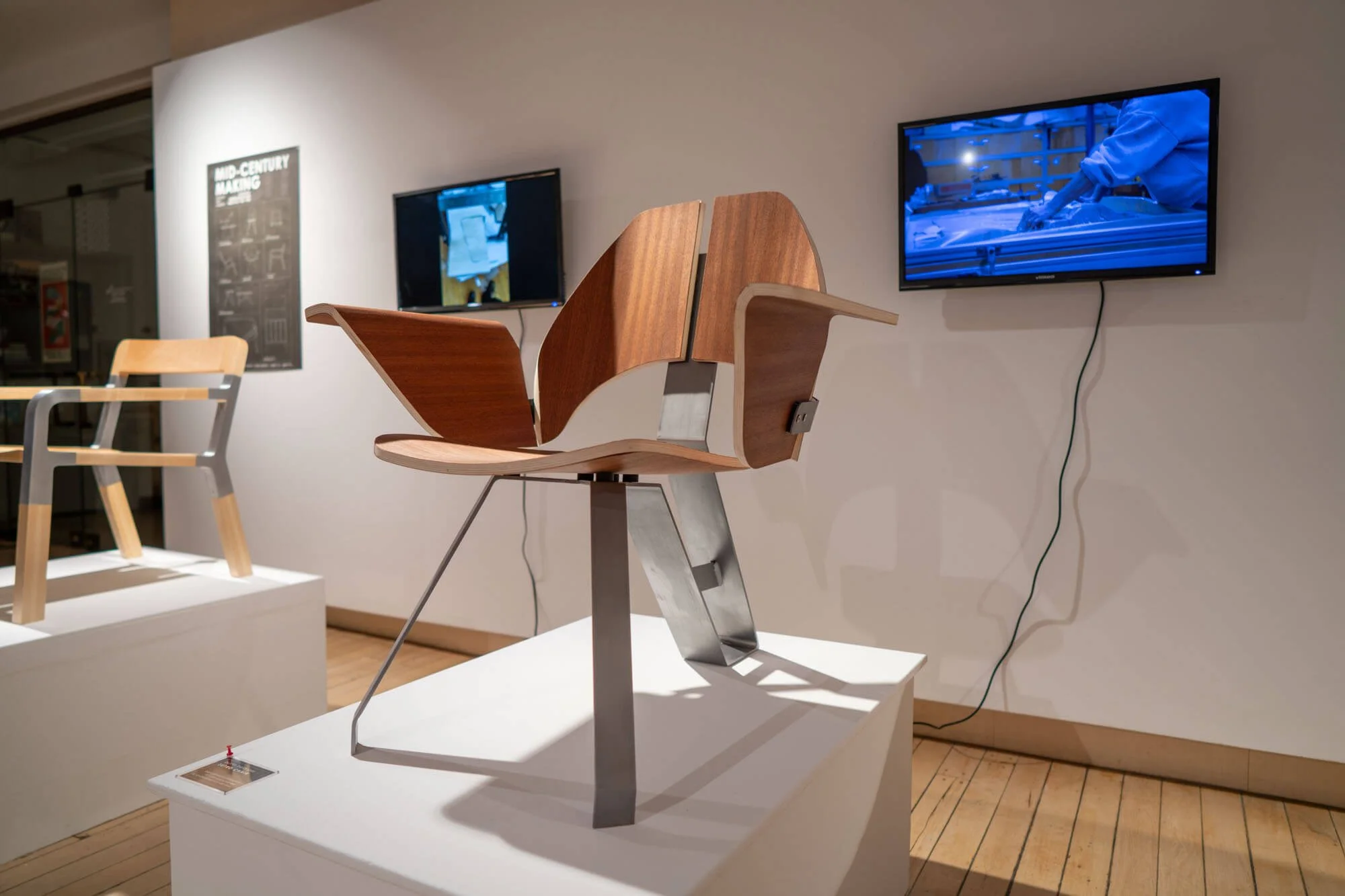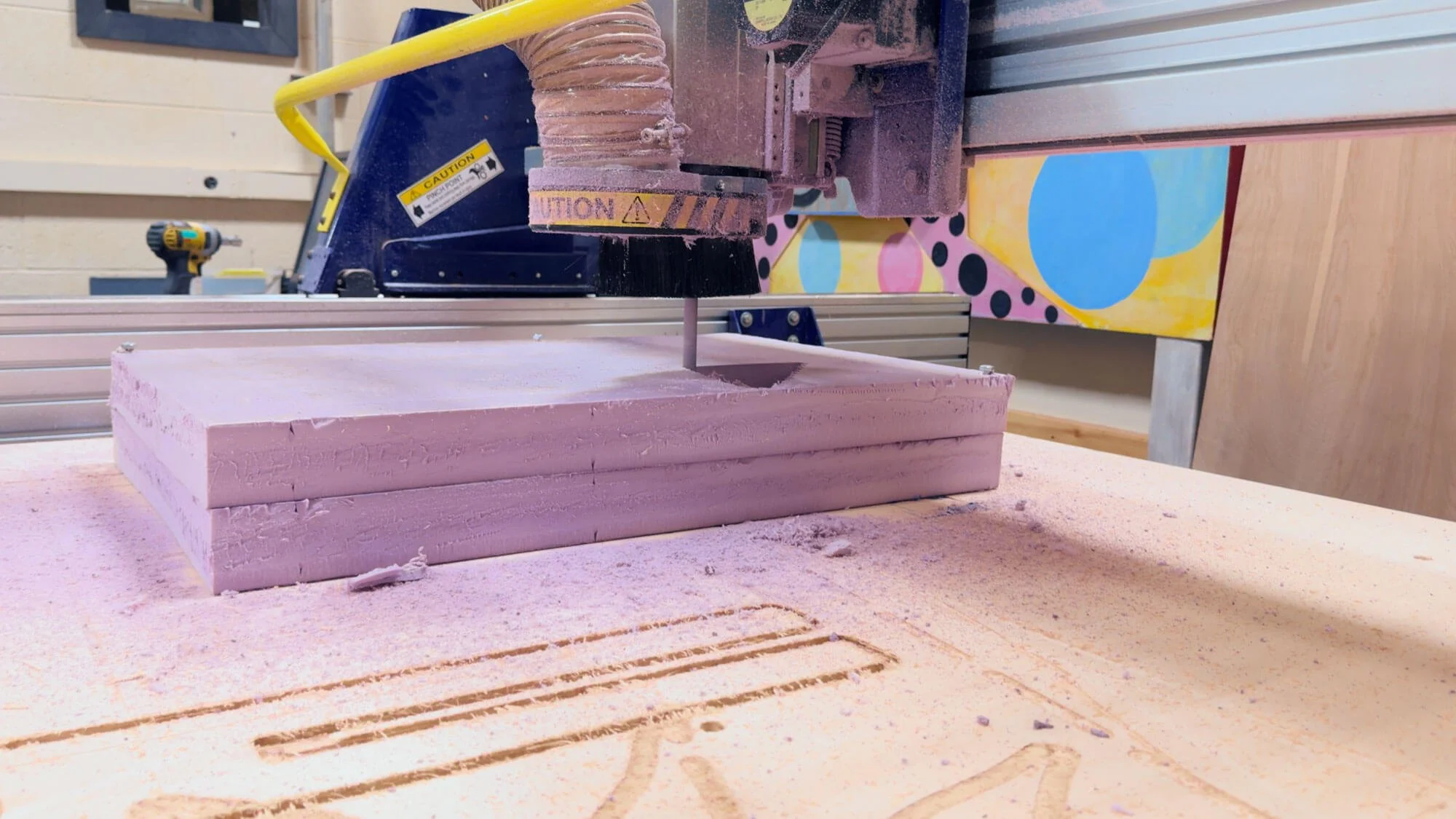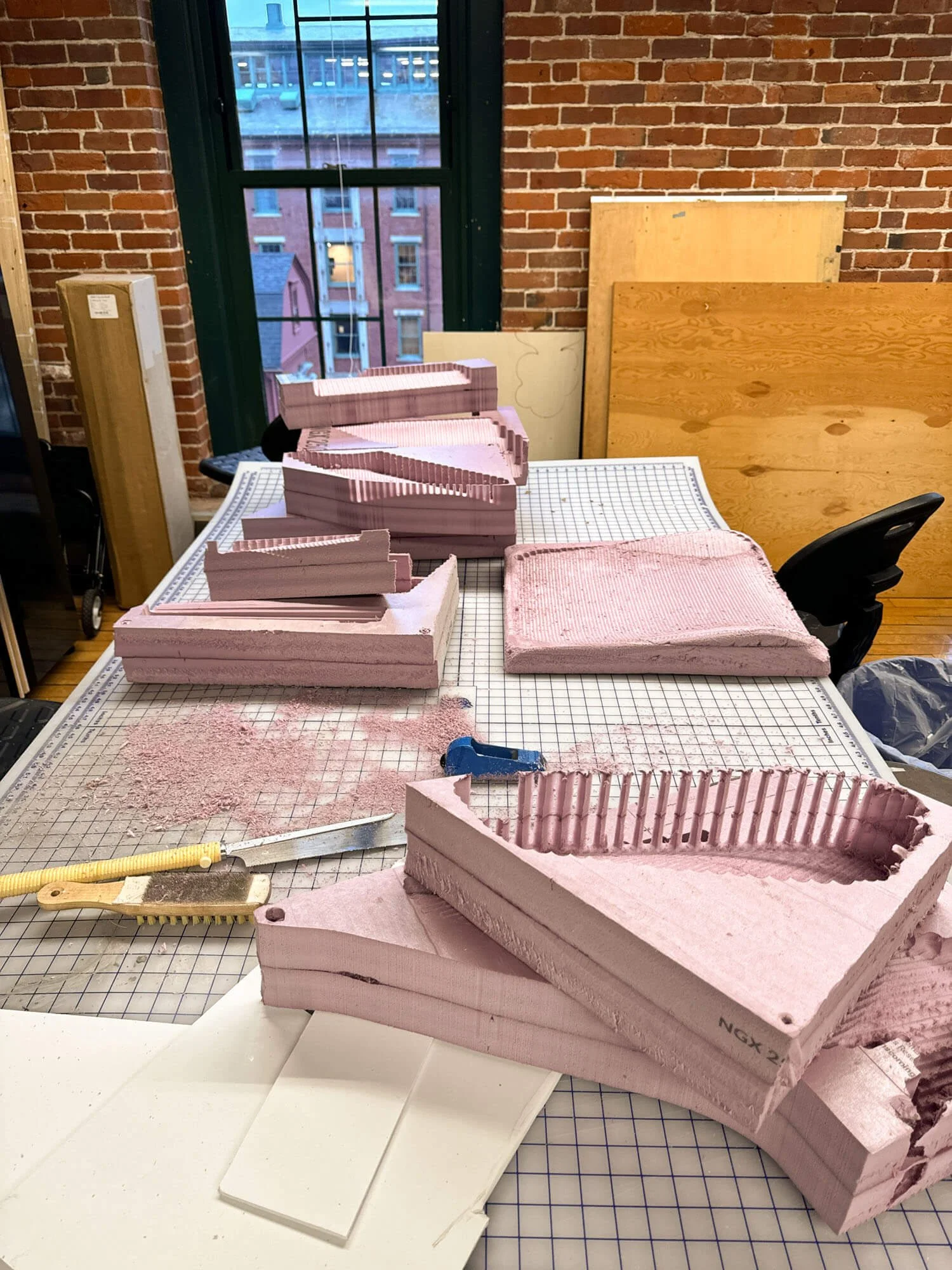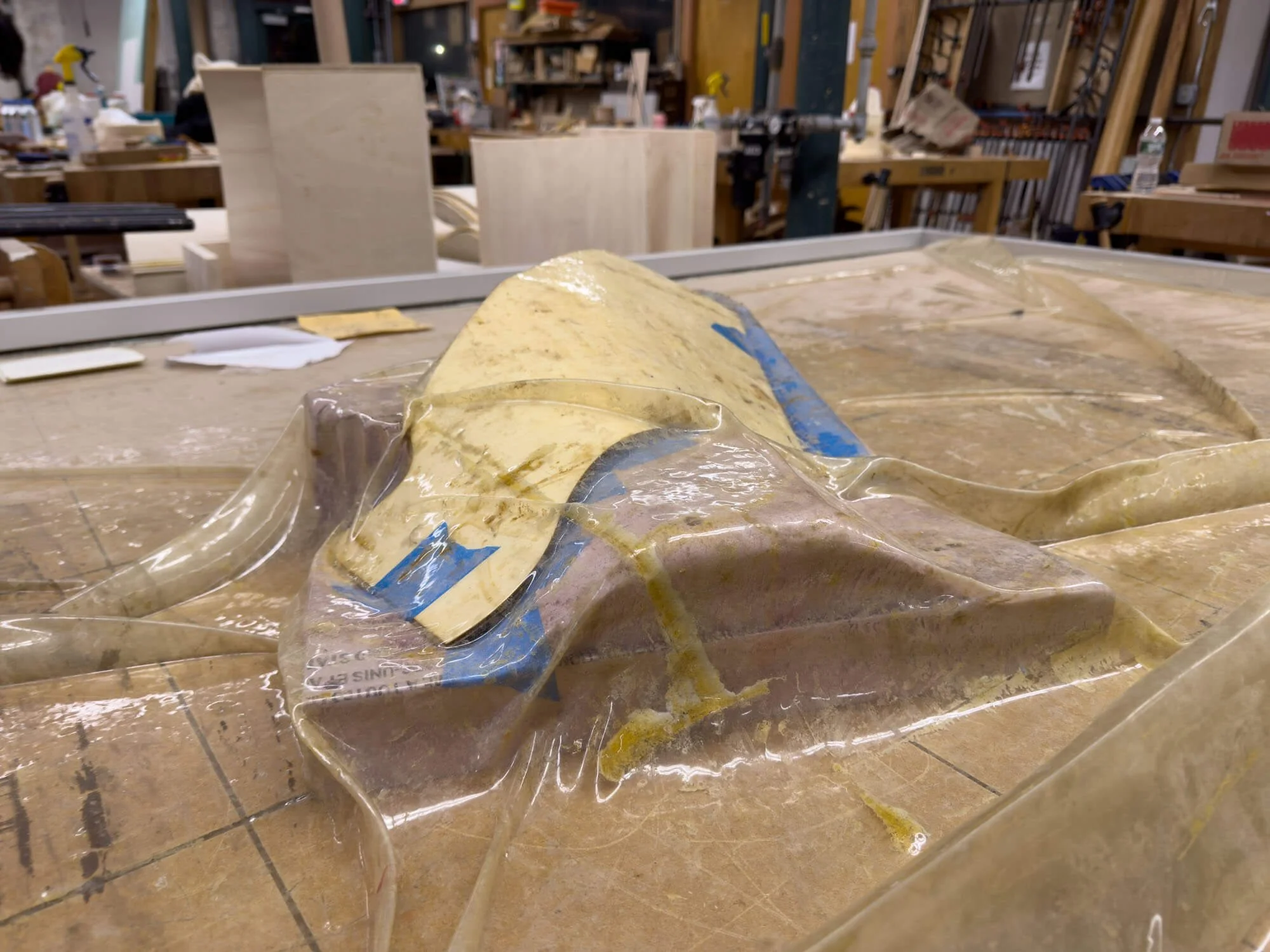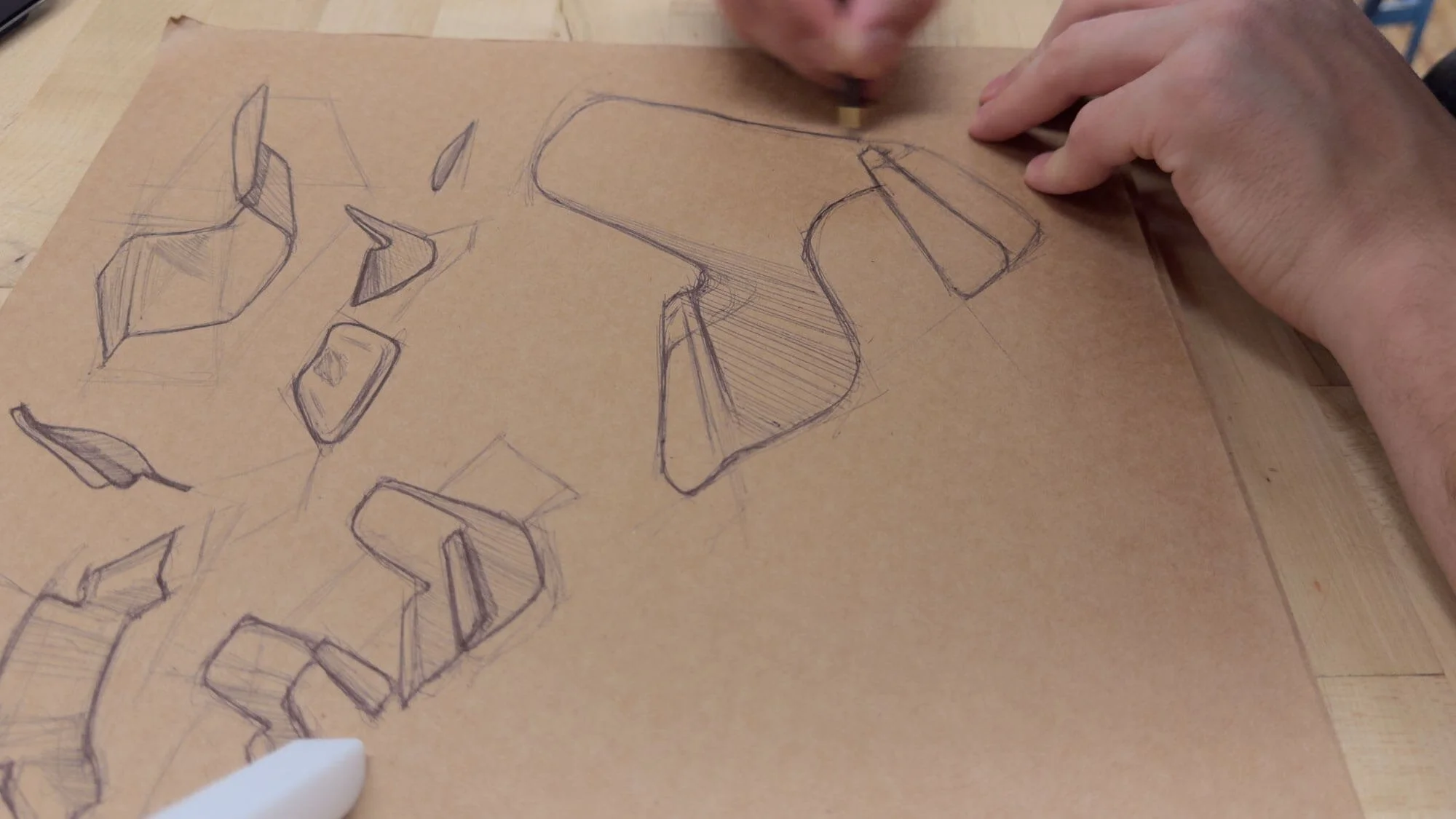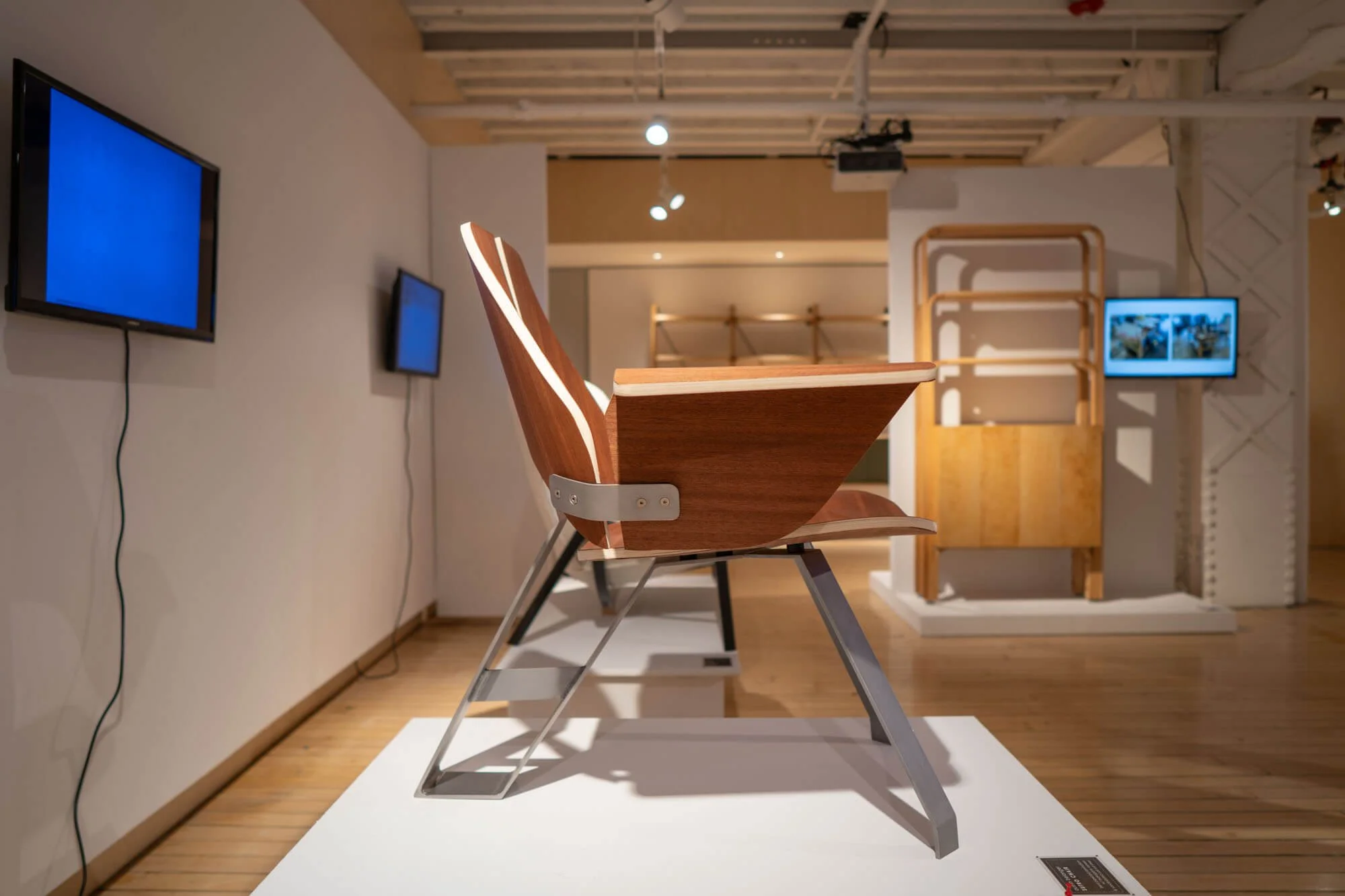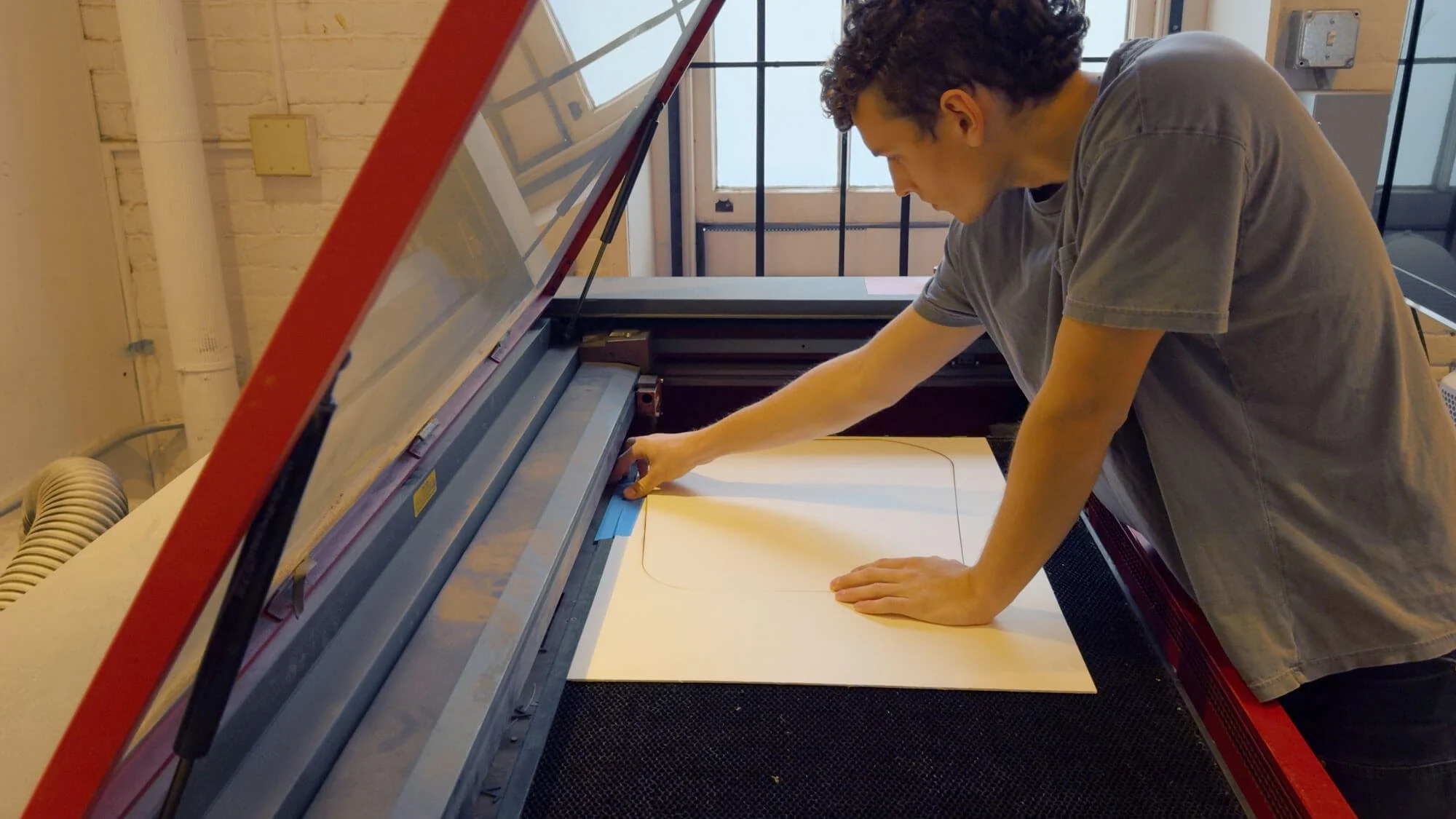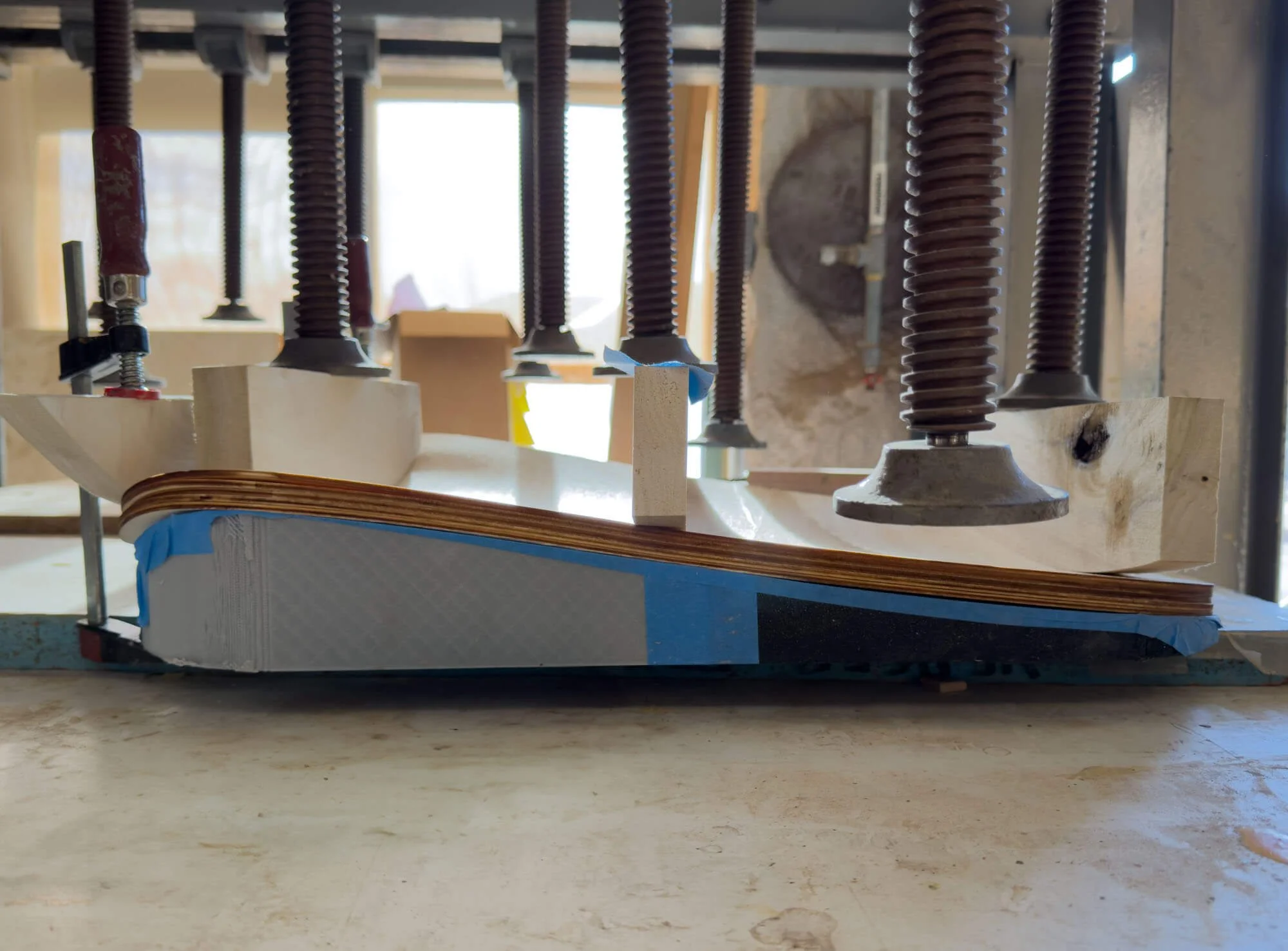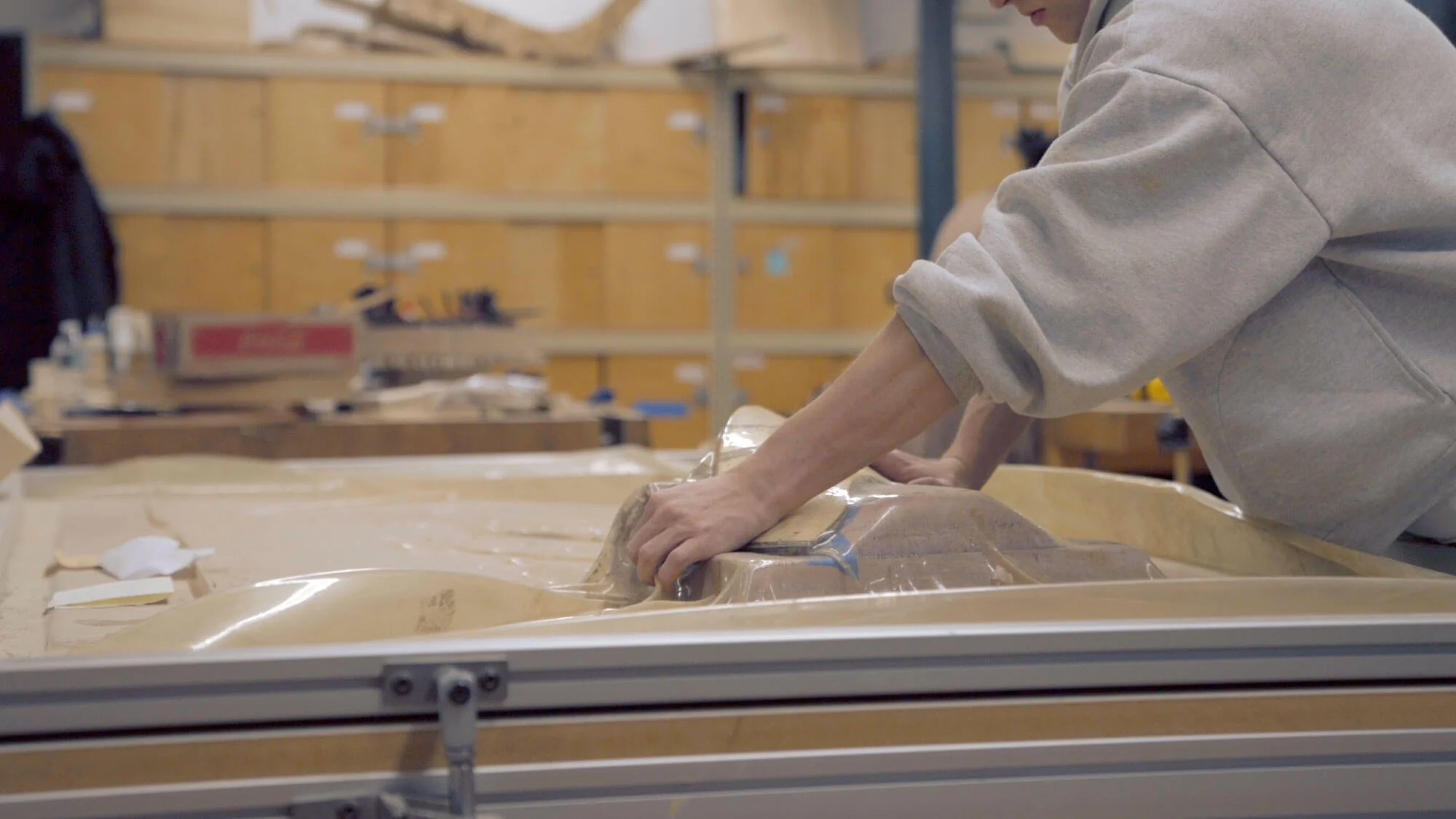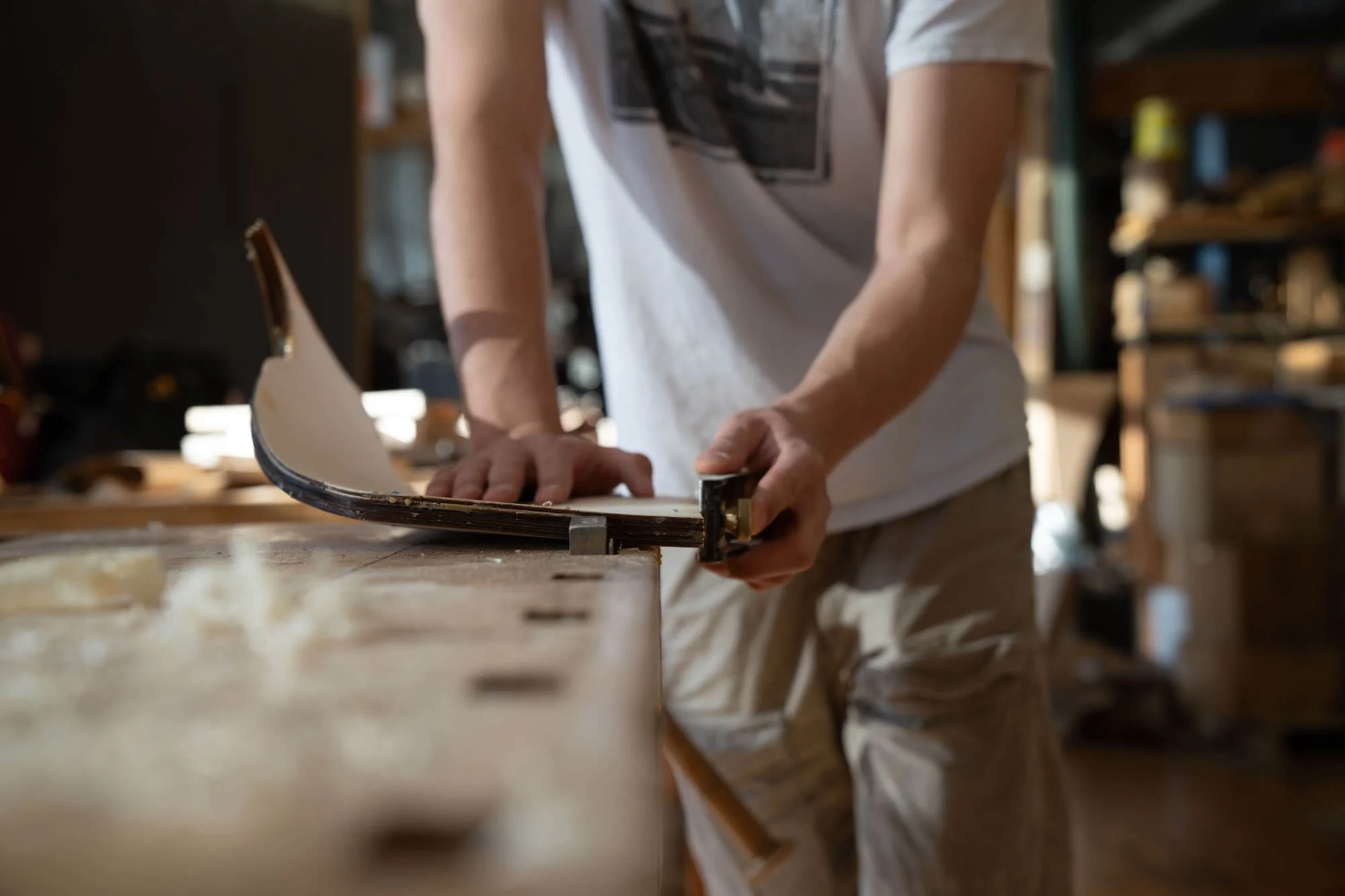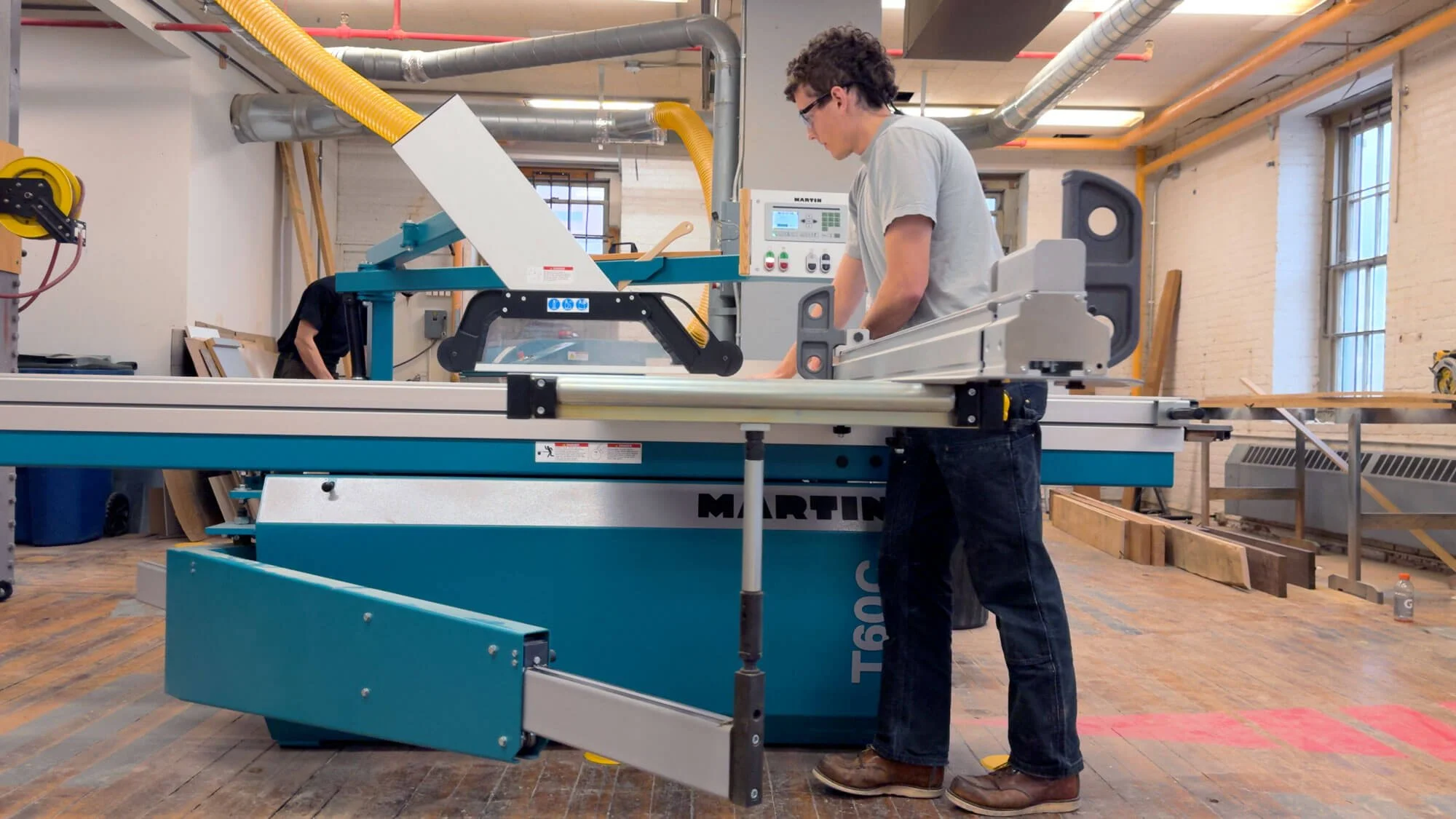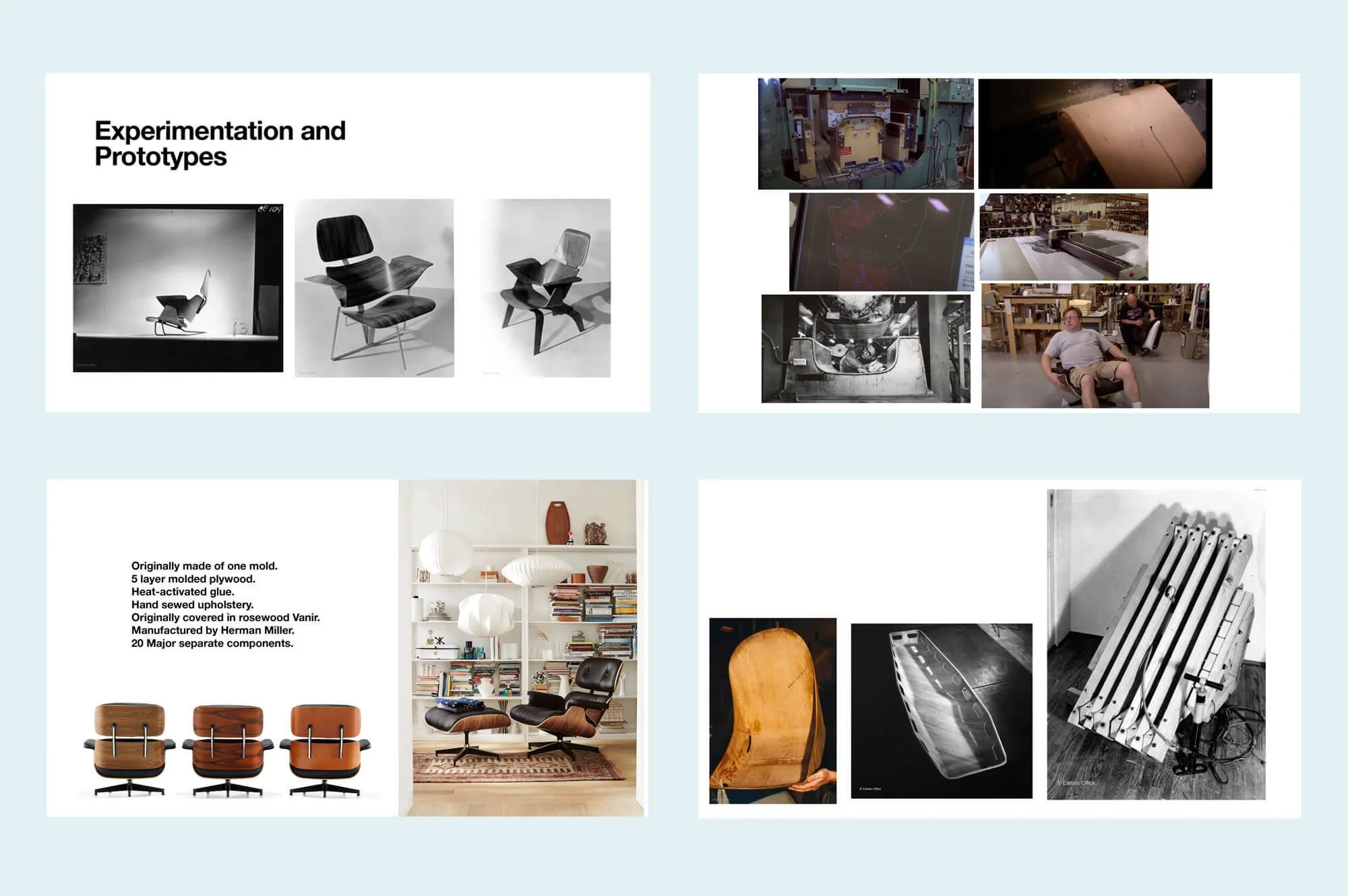Sutro Chair
What can you learn by leaning into the inspiration of an iconic design language?
I was challenged to design and build a chair inspired by visual cues and manufacturing techniques from mid-century designers and architects.
Inspired by the 670 Lounge Chair by Ray and Charles Eames, I began to research more about their techniques used for early prototypes and manufacturing. The Eameses were pioneers of bending plywood and often used metal molds with heat and pressure to achieve elaborate organic shapes. I set out to design a chair that used these same principles with the tools at my disposal
My sketches were heavily inspired by the prototypes for the 670 Lounge Chair. I was interested in the visual transition of shapes from the seat to armrests and the back to armrests. I began to explore the possibilities of when and how that transition should take place. I knew even at this stage that I wanted to include compound curves into many of my laminations.
Given the tools I had available to me, I had to adapt my process from what the Eames’ did. I began by laser cutting out my flattened shapes out of bending plywood. Through experimentation I realized I could raster engrave kerf cuts as stress relief for the tighter radiuses on the armrests. I then cnc’d the molds out of foam. Next I began my bent laminations; for tighter bends or compound curves (seat and armrests) I soaked the bending plywood and let it dry in a veneer press before it reached the vacuum bag. I then post processed the laminations and applied a mahogany veneer (the original was made from brazilian rosewood but was later switched to mahogany for environmental reasons). The base was welded out of ¼ inch cold rolled steel.

